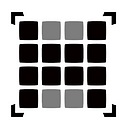Apple’s U1 Chip and Amazing New Capabilities
Last week, Apple introduce the iPhone 11 Pro, with three cameras, a better screen, more gee bees, but not as much as an Android, but only poor people buy Androids. Everyone loves the new iPhone.
The new iPhone has a trick up it’s sleeve, even though it isn’t really supported by anything quite yet. It’s Apple’s new U1 chip, a chip that allows the iPhone 11 Pro to locate anything equipped with an electronic tag. This isn’t a cheap trick, either: put a tag on your keys, and your iPhone will tell you your keys are, ‘Three meters to your right, half a meter down.’ This is location data, for anything, anywhere.
It’s Called Location services
GPS is a game changer for a smartphone. You can take a phone to any place on the planet, and instantly you can pull up a map of your surroundings. GPS is accurate to feet, and with a data connection you can find your way from any point to any other point on the globe. People don’t buy maps anymore, because everything, the entire world, is on your phone.
But GPS has limitations. GPS doesn’t work indoors, and it doesn’t work in parking garages. GPS requires quite a bit of power, relatively speaking, and it’s not accurate enough to find your keys. In any event, GPS only receives a signal, it doesn’t transmit. Building a GPS-based ‘tag’ that would transmit the position of your keys would cost too much.
But the U1 chip doesn’t use GPS. Instead, it’s using technology that’s been in development for the last decade or so, and does everything with a single radio. The patents for this technology mention Ultra-wideband radios and time-of-flight ranging, along with trilateralization.
Why You Want This
This sort of technology allows for several nifty things that simply aren’t possible with current technology. The simplest example is finding your keys. In this use case, all you would need to do is attach a ‘tag’ to your keychain, and your phone will tell you, yes, your keys are on the kitchen table again.
Several other use cases immediately come to mind. Cats and dogs have had RFID chips for decades now, for easy identification if they’re ever picked up at the pound. Putting one of these tags in a dog leash would be simple, and you could always find your dog. Alternatively, a ‘smart lock’ on your front door could unlock whenever you’re walking up to your house, slightly ironically obviating the need for keys. Thermostats could turn off when you leave the house.
But Augmented Reality and VR is a thing, or at least will be, and here we see gigantic benefits. Imagine a Google Glass-like device that could direct a worker around a warehouse, or even something like the trackers from Aliens:
This Isn’t New, At all
The U1 chip isn’t Apple’s first experiment in tracking the location of various objects. iBeacons were developed by Apple and released to the world in 2013. This technology used Bluetooth Low Energy to transmit a universally-unique identifier, ostensibly allowing anyone to track the location of an object. Alternatively, you could track customers in a store, or use iBeacons as price tags, making shopping as easy as walking out of the door.
iBeacons failed because the technology had a low spacial resolution, and determining the distance and direction to an object depends on trilateralization, not simply seeing the signal strength of an iBeacon. To make location-aware devices work, you need better technology.
Fortunately, that technology is here. In recent years, Decawave has created an Ultra-wideband radio technology that measures the time of flight of a radio signal. This is significantly more advanced than an iBeacon and has an accuracy better than one centimeter.
But this technology doesn’t actually require anything new. Location services can be done with WiFi using trilaterization and WiFi beacon frames, as in the SubPos project. This is a project that uses standard, off-the-shelf WiFi modules to broadcast a location. This technique uses base stations to trilaterlate a phone’s location. No, it won’t direct your phone to your keys, but it will direct you around a parking garage.
This Is the next Phase of Ubiquitous Computing
Phones do a lot. You can get a map of any place on the planet, and they’ll take great pictures of everything. The entire catalog of recorded music is available with a data connection, and you can stream movies direct to your phone. There is one sense a phone doesn’t have quite yet, and that’s finding other things around it. That’s what Apple’s U1 chip does, and Ultra-wideband location services allows.
Sure, it’s going to take a few years before this is common, but the future is coming, even if we’ve seen something like it a few years ago.

